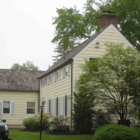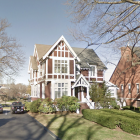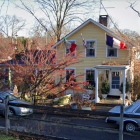Government
Committee Votes 3-0 Against Imposing Demolition Delay at Weed and Elm
|
Saying a widely discussed ca. 1928-built house on the corner of Weed and Elm Streets fails to meet the criteria spelled out in a local ordinance, members of a town committee last week voted against imposing a 90-day demolition delay on the structure.
The Historical Review Committee during a special meeting at Town Hall voted 3-0 to forgo imposing the demo delay at 751 Weed St., site of a planned 120-unit residential development. “My view after hearing what fellow commissioners have said, and my own view of this, is that I don’t see this as a particularly—it doesn’t seem to fit into any of the three categories of the ordinance that empowers this committee and sets forth specifically the criteria that we are supposed to consider,” Committee Chair Frederick Whitmer said during the June 29 meeting.
He continued, “The first being that there’s some event that’s associated with the building. I don’t see that. Secondly, that it is somehow associated with someone of significance, either state, nationally or locally, to the property.




